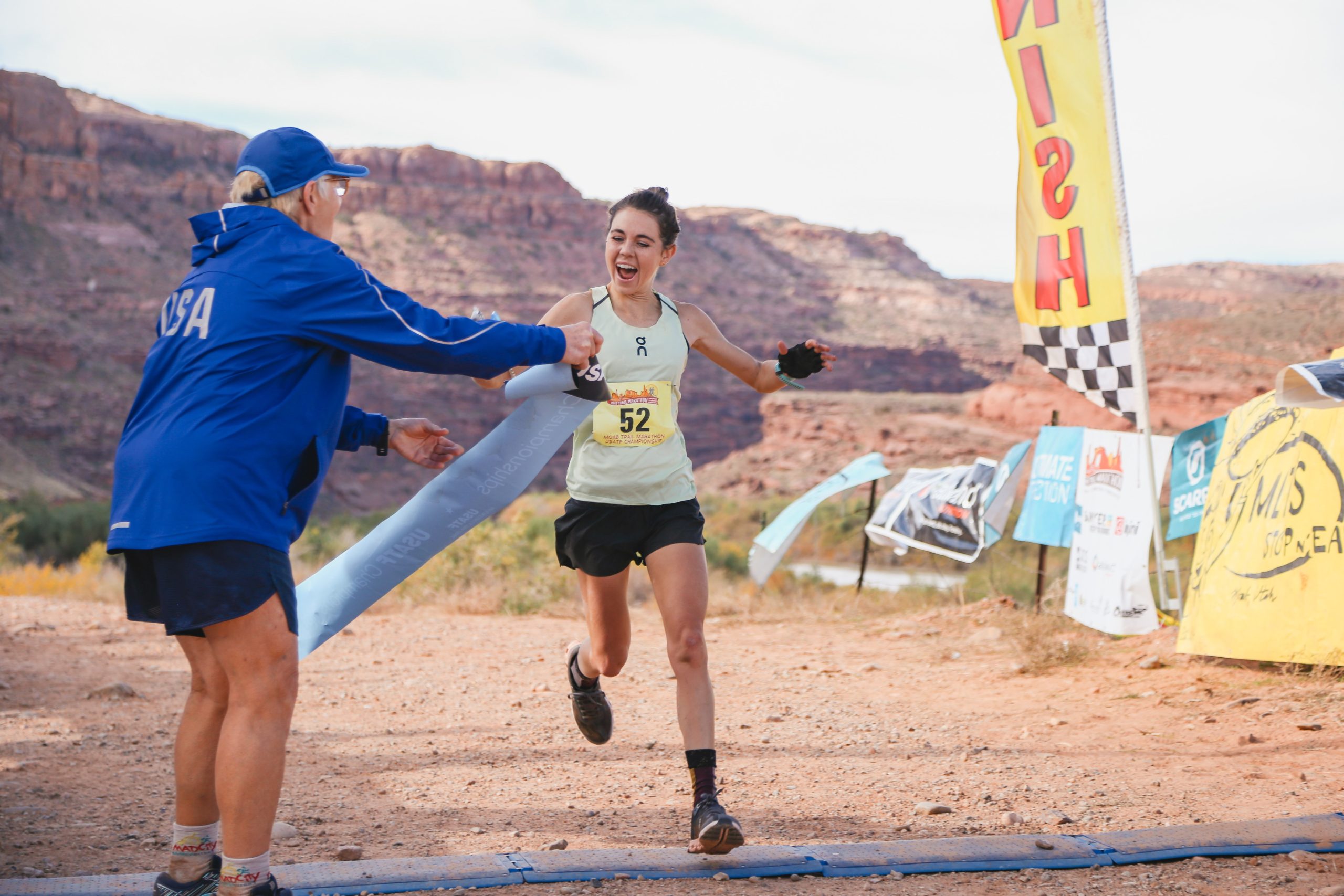Some information may be outdated.
Every November for 14 years, hundreds of runners have flocked to Moab to participate in the Moab Trail Marathon: a course off Kane Creek road that follows Pritchett Canyon to Hunter Canyon Rim Trail, then dips onto the Captain Ahab singletrack trail and Cliff Hanger Jeep trail, and finishes out on Jackson’s trail. This year, races will occur on Saturday, Nov. 5 and Sunday, Nov. 6.
“It started off with just a few hundred people,” said Danelle Ballengee, the director and founder of the marathon, “and it really just spread by word of mouth.”
Now, Ballengee said the race has become incredibly popular, despite the fact that she has hardly done any advertising. It’s been listed in Trail Runner Magazine as one of the top ten “bucket list” races for runners to take on.
“I think a lot of race directors are like, ‘you can’t run that—it’s too rough, it’s too scary, there are too many rocks in the way,’” Ballengee said. “But I come from a background of trail and mountain running, having done a lot of international and adventure races, and this is the stuff that I love. That’s where the marathon grew from: this is what makes me happy, is running through this environment. And now I get to offer this to the world as an opportunity for runners.”

Trail running, especially in a distance setting, is much different from road running, Ballengee said. In a traditional marathon, the top runners will look at their time splits: They’ll try to stick to a set pace. In a trail marathon, runners have to focus on the way their body feels—there’s no set way to stick to a pace when the course includes technical obstacles.
“There’s something about the desert and the canyons that’s soothing … When I’m out on the trail, it’s like meditation—I’m able to forget about any worries and just let thoughts run through my head, and just enjoy the run and the scenery,” Ballengee said. “It’s just more peaceful.”
The race itself is constantly evolving. At the very beginning, it was an ultra-marathon (a 50K, nearly 31 miles), but Ballengee said that was a little too tough.
“We wanted people to finish, and be able to go home and not be completely wrecked,” she said.
The race was changed to a marathon distance, and Ballengee added a 5K and kids 1K option—now, all the races include fun obstacles like creek-crossings, running through a cave and arch, and using hand lines and ladders to climb up and down small cliffs.
Ballengee also added another half-marathon race day. This year, 650 people are running the marathon—around 60% are returning runners, Ballengee said—and around 1,500 are running the half marathons.

She always tries to keep the race fresh and adaptable, she said. Hosting the race through the COVID pandemic was tricky, but she reorganized it so runners were more spread out. This year, she’s working through flood damage to the course: one area has a floating walkway.
Ballengee has been running in the Moab area for years—she was a professional runner, and always enjoyed trail running in the desert landscape. What originally inspired the race was an accident she had in 2006, she said: she was running a part of the course that is now the Moab marathon on a practice run when she slipped and fell 60 feet to the bottom of a canyon. She survived, but broke her pelvis, meaning she couldn’t move—she was stuck for two days and two nights, in December, before her neighbor called her in as a missing person, and her dog, Taz, ran back to town and helped rescuers find her.
“What inspired this race initially was this place where I survived,” Ballengee said. “I don’t have hard feelings about it—I have happy feelings, like, I was able to live and I was able to survive … To be able to share this course with people, and for them to appreciate it and enjoy it, is healing for me.”
She still gets nervous, she said, when she marks the course and passes by that area, which she now calls “Taz’s Canyon.” But the race ultimately brings her a lot of joy, she said: she loves the landscape so deeply, and loves hearing the stories of the runners who participated.
“Some people are out there running in memory of somebody, some people are out there just with their friends, and for a lot of people, this is their end-of-year escape to Moab to get in the final run of the year,” Ballengee said. “People are happy, and it’s so rewarding.”
The top runners will finish the course in less than three hours, and the cutoff is set at eight hours. The top runners of the marathon will also be recognized as National Champions and will split $6,600 in prize money. Proceeds from the race will benefit a number of local Moab nonprofits including Community Rebuilds, the Humane Society of Moab Valley, and the Grand County High School Mountain Bike team.
The marathon, 5K, Kids-K, and one half-marathon will take place on Saturday, Nov. 5; another half-marathon will follow on Sunday, Nov. 6. Registration for next year’s race opens in March.
Appreciate the coverage? Help keep local news alive.
Chip in to support the Moab Sun News.





